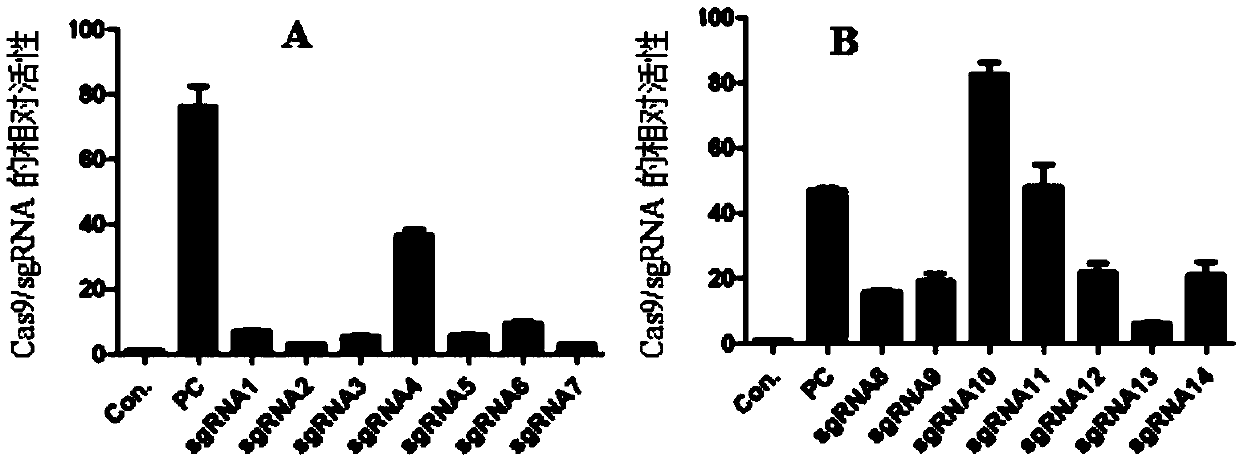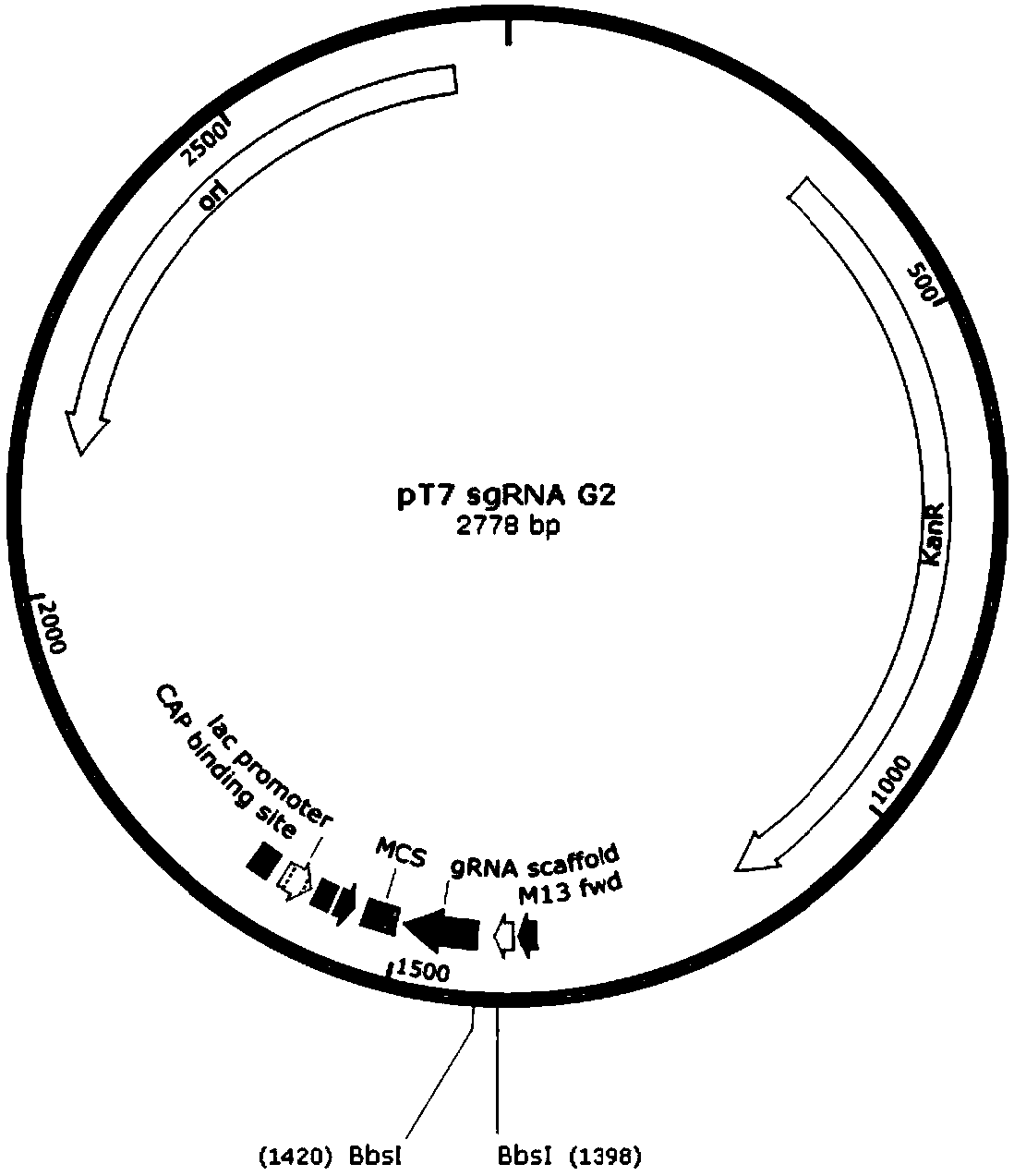Preparation method and application of non-human animals or offspring thereof genetically modified by Hr gene
A non-human animal and genetic modification technology is applied in the field of preparation and application of genetically modified non-human animals with Hr gene or their progeny, which can solve the problems of cell residues, humoral immunity leakage, impure background, etc., and save time. and cost, reduce the risk of drug development, and speed up the process of new drug development
- Summary
- Abstract
- Description
- Claims
- Application Information
AI Technical Summary
Problems solved by technology
Method used
Image
Examples
Embodiment 1
[0126] Example 1 Design of Hr gene sgRNA
[0127] The target sequence determines the targeting specificity of the sgRNA and the efficiency of inducing Cas9 to cleave the target gene. Therefore, efficient and specific target sequence selection and design are the prerequisites for constructing sgRNA expression vectors.
[0128] Multiple sgRNAs were designed for the mouse Hr gene (NCBI Gene ID: 15460), wherein the target site sequence targeted by each sgRNA is as follows:
[0129] sgRNA1 target site sequence (SEQ ID NO: 1): 5'-acccgacaggctcgagtcactgg-3'
[0130] sgRNA2 target site sequence (SEQ ID NO: 2): 5'-cctggcactgccgtcgggcttgg-3'
[0131] sgRNA3 target site sequence (SEQ ID NO: 3): 5'-ccccagagagacgcaagcgaggg-3'
[0132] sgRNA4 target site sequence (SEQ ID NO: 4): 5'-cgctgctaactgaagcccggagg-3'
[0133] sgRNA5 target site sequence (SEQ ID NO: 5): 5'-ttccctcgcttgcgtctctctgg-3'
[0134] sgRNA6 target site sequence (SEQ ID NO: 6): 5'-ggtgccctggcactgccgtcggg-3'
[0135] sgRN...
Embodiment 2
[0144] Example 2 Screening of sgRNA
[0145] UCA kit was used to detect the activity of the above sgRNA, and the results showed that the sgRNA had different activities. For the test results, see figure 1 and Table 1. According to the results of the activity test, sgRNA4 and sgRNA10 are preferred and TAGG is added to the 5' end of its upstream sequence to obtain sgRNA4 and sgRNA10 forward oligonucleotides respectively, and AAAC is added to the 5' end of its complementary strand (downstream sequence) respectively sgRNA4 and sgRNA10 were obtained to obtain reverse oligonucleotides, and subsequent experiments were performed after synthesizing forward and reverse oligonucleotides.
[0146] Upstream of sgRNA4 sequence: 5'-cgctgctaactgaagcccgg-3' (SEQ ID NO: 15)
[0147] sgRNA4 forward oligonucleotide: 5'-taggcgctgctaactgaagcccgg-3' (SEQ ID NO: 16)
[0148] Downstream of sgRNA4 sequence: 5'-ccgggcttcagttagcagcg-3' (SEQ ID NO: 17)
[0149] sgRNA4 reverse oligonucleotide: 5'-aaaccc...
Embodiment 3
[0157] Example 3 pT7-sgRNA G2 plasmid construction
[0158]The fragmented DNA containing the T7 promoter and sgRNA scaffold was synthesized by a plasmid synthesis company and ligated to the backbone vector pHSG299 by restriction enzyme digestion (EcoRI and BamHI) in sequence. After sequencing verification by a professional sequencing company, the results showed that the target plasmid: pT7-sgRNAG2 plasmid was obtained See atlas figure 2 .
[0159] Fragment DNA containing T7 promoter and sgRNA scaffold (SEQ ID NO: 23):
[0160] 5'-gaattctaatacgactcactatagggggtcttcgagaagacctgttttagagctagaaatagcaagttaaaataaggctagtccgttatcaacttgaaaaagtggcaccgagtcggtgcttttaaaggatcc-3'
PUM
 Login to View More
Login to View More Abstract
Description
Claims
Application Information
 Login to View More
Login to View More - R&D
- Intellectual Property
- Life Sciences
- Materials
- Tech Scout
- Unparalleled Data Quality
- Higher Quality Content
- 60% Fewer Hallucinations
Browse by: Latest US Patents, China's latest patents, Technical Efficacy Thesaurus, Application Domain, Technology Topic, Popular Technical Reports.
© 2025 PatSnap. All rights reserved.Legal|Privacy policy|Modern Slavery Act Transparency Statement|Sitemap|About US| Contact US: help@patsnap.com



